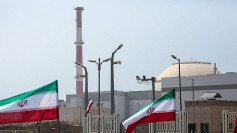Lockheed Martin Corporation, the largest defense contractor in the United States and the world, is prepared to invest in excess of $1 billion to develop the SR-72 hypersonic unmanned aerial vehicle (UAV) for reconnaissance and combat missions.
The SR-72, which is being designed to attain speeds of Mach 6 (7,400 km/h), will be the first hypersonic aircraft in the world capable of unleashing hypersonic missiles.
This hypersonic fighter now in development is nicknamed "Son of Blackbird," in honor of its "father," the Lockheed SR-71 Blackbird strategic reconnaissance aircraft retired by the U.S. Air Force in 1998. During its reign in the skies, the Blackbird was the world's fastest aircraft. It could achieve a maximum speed of Mach 3.3 (3,540 km/h) and reach a service ceiling of 26,000 meters.
Unlike its unarmed "father," the SR-72 "son" can launch hypersonic missiles at Russian and Chinese aircraft in the event of a future war. The son's first iteration, however, will be an unmanned recon vehicle relying on its fantastic speed to escape destruction.
And in contrast to its father that was flown by two expert pilots, the son will be an unmanned drone flown by top-of-the-line computers. Lockheed-Martin, specifically its famous "Skunk Works" (the Advanced Development Programs or ADP), began development work on the SR-72 in 2013.
The company is confident the combination of high speed and hypersonic missiles mean no enemy missile defense systems will be capable of stopping the SR-72 in combat.
Hypersonic aircraft plus hypersonic missiles can penetrate denied airspace and strike at nearly any location across a continent in less than an hour, said Brad Leland, Lockheed Martin hypersonics program manager.
Leland pointed out that speed is the next aviation advancement to counter emerging threats in the coming decades. Hypersonic technology is a game changer, similar to to the effect stealth had in changing the battlespace today.
Lockheed Martin said a prototype of the SR-72 is scheduled to fly before 2025. Development of the SR-72 is being guided by the goal that this hypersonic demon will fly so fast an adversary will have no time to react to or hide from it.
In June 2017, Lockheed Martin announced the SR-72 will be in development by the early 2020s. Executive Vice President Rob Weiss said Lockheed along with DARPA and the armed services "are working hard to get that capability into the hands of our warfighters as soon as possible."
Last January, Lockheed credited advances in additive manufacturing or 3D printing and computer modeling for helping greatly advance the SR-72 program. 3D printing, for example, allowed the plane's cooling system to be embedded in the engine.
Lockheed believes the SR-72 could forever change the ability of the United States to deter and respond to conflict. This hypersonic fighter will allow American warfighters "to quickly address threats before an adversary may have time to react."
The SR-72 will change the "definition of air power by giving the U.S. significant tactical and strategic advantages."






